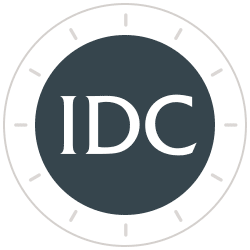IDC CAMEL Analysis Rank of Financial Ratios
The financial condition of your institution depends on a number of factors; from the balance sheet (How large a capital cushion have you been able to build up over the years? What is the quality of your loan and investment portfolios?)…and from the income statement (Was your Return on Equity for the most recent reporting period larger than your Cost of Equity? What percent of your net operating revenues are consumed by operating expenses? And so on).
The best way to understand the impact of all these factors is to consider them relative to a defining factor for your particular institution...most often, asset size. The result of such an analysis is a series of ratios which provide important clues about how well managed your bank is, and about how well you’re positioned to deal with potentially adverse economic conditions...or to profit from good times. These financial ratios are used by management to measure progress towards specific goals or as a comparison to peers.
IDC has gone a step further. By considering all of these ratios, and weighting them to reflect their relative importance to the health of your institution, we’ve devised a method of producing one overall rank number (on a scale of 1 to 300, with 300 the top rank attainable). We’ve computed an IDC rank for every financial institution in the country that reports to the federal government. This number allows direct comparison of any institution with any (or all) others, in terms of financial soundness. And we have a remarkable track record of being able to identify deteriorating or improving performance many months, and sometimes years, before it becomes apparent to less-sophisticated companies. Since 1989, 99% of bank and savings institutions failures were ranked less than 75, for the reporting quarter prior to failure, using IDC’s methodology. In consequence, IDC's ranks have become the standard for those who need to know about the health of a given institution.
IDC’s CAMEL analysis evaluates risk in a one-number rank of financial ratios, which includes (C) capital ratios, (A) adequacy of capital to cover loan losses, (M) margins, including ROE less COE, as well as, level and stability of profitability to measure management, (E) earnings from operations and leverage, and (L) liquidity. Each of the financial ratios used to calculate a summary rating of safety has absolute multiples or relative weights to the universe of competing institutions.
Capital risk is determined by Tier I capital as a percent of assets and as a percent of risk-based assets. Tier I & II capital as a percent of risk-based assets (risk-based capital ratios) measure credit and interest rate risk as well as estimate risk in the asset base. IDC uses government standards, as well as, enforcement actions to evaluate well, or less than well, capitalized institutions.
Adequacy of Capital and reserves measures asset quality as the levels of delinquent loans, nonaccrual loans, restructured and foreclosed assets relative to loan loss reserves and Tier I capital.
Margins are the best measurement of management's financial controls. Margins represent the spreads between 1) operating profit and net operating revenues or the operating profit margin, 2) after-tax return on earning assets and cost of funding, and 3) most important, the return on equity compared to estimated cost of equity capital. Stability of profitability measures the variation of the operating profit margin.
Earning returns measure the success of the bank's operating strategy. Ratios of revenue yields from investments, loans, and noninterest income compared to operating costs before interest expense are the major components of the after-tax net operating return on earning assets (ROEA). ROEA is a measure of operating strategy as if the institution was wholly funded by equity capital. Earnings from financial leverage (ROFL) measures the level of leverage and after-tax cost of funding compared to the after-tax return on earning assets (ROEA). Leverage returns measure the efficiency of the bank's financial strategy.
Liquidity measures (1) balance sheet cash flow as a percent of Tier I capital and (2) loans compared to stable deposits and borrowings plus estimated unused lines of credit at the Federal Home Loan Bank.
IDC is going ONLINE! IDC Financial Publishing, Inc. is excited about the launch of its online platform for presenting the IDC Rank of Financial Ratios and the CAMEL Analysis. Over 13,000 institutions will be readily available with rank, financial ratios, and commentary… all within the CAMEL Analysis.
